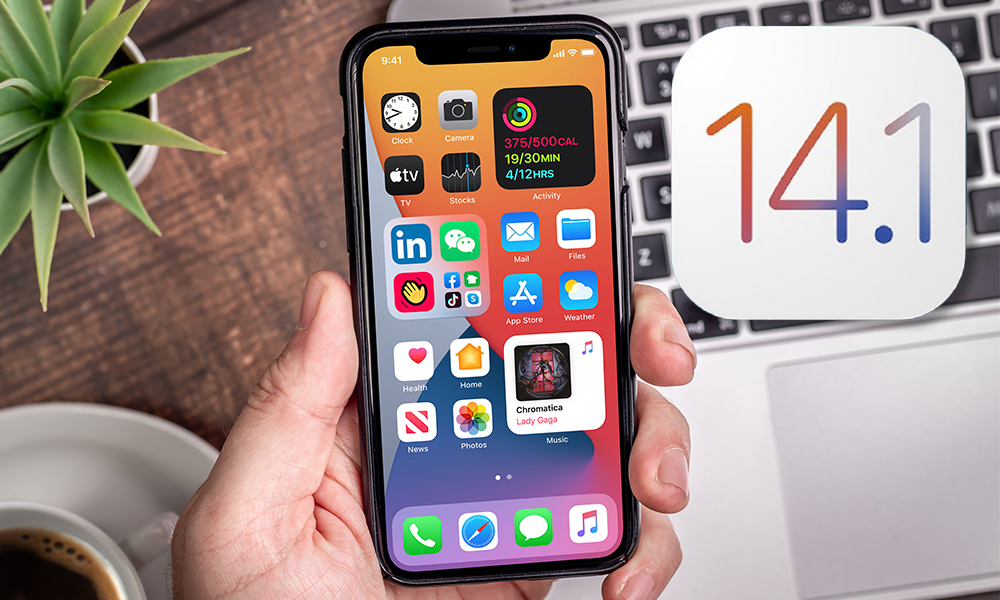Apple Releases iOS 14.1 and iPadOS 14.1 (Here’s What’s New)
 Credit: Yalcin Sonat / Shutterstock
Credit: Yalcin Sonat / Shutterstock
Toggle Dark Mode
With Apple’s new iPhone 12 and iPhone 12 Pro arriving later this week, Apple has now released iOS 14.1 — the version expected to be shipping on the newest iPhone models — for general consumption.
Although Apple already released the first iOS 14.2 beta last month, only days after it released the Apple Watch Series 6 and announced its latest new iPad models, it seemed clear at the time that it was skipping over iOS 14.1 in order to save it for its big October iPhone 12 announcements, while also avoiding any leaks as to what might be coming in the new iPhone hardware.
So in addition to the usual bug fixes, iOS 14.1 naturally introduces support for the new iPhone 12 lineup, including bringing some of those newly-announced features to older iPhone models.
What’s New
Perhaps the most notable feature is the ability to playback and edit 10-bit HDR videos.
While 10-bit Dolby Vision HDR video recording is the exclusive purview of the iPhone 12, it looks like any iPhone model as far back as the 2017 iPhone 8 will be able to playback and edit those videos in the Photos app.
Beyond that there’s quite a list of other fixes from iOS 14, including issues with widgets, folders, and icons not showing up properly or moving around properly on the home screen, along with several other display issues, along with problems with aliases in the iOS Mail app, adding songs in the Music app, and Apple Watch Family Setup.
The iOS 14.1 update is also naturally accompanied by iPadOS 14.1, which is expected to be the version that comes preinstalled on the new iPad Air when it arrives in users’ hands this week.
Here’s the full list of what’s new and changed in iOS 14.1 and iPadOS 14.1:
- Adds support for 10-bit HDR playback and edit in Photos for iPhone 8 and later, iPad Pro 12.9-inch (2nd generation) and later, iPad Pro 11-inch, iPad Pro 10.5-inch, iPad Air (3rd generation) and later, and iPad mini (5th generation)
- Fixes an issue where some widgets, folders and icons were showing in reduced size on the Home Screen
- Fixes an issue where dragging widgets on the Home Screen could remove apps from folders (iOS 14.1)
- Resolves an issue where some emails in Mail were sent from an incorrect alias
- Fixes an issue that could stop incoming calls from showing region information
- Fixes an issue on some devices where selecting zoomed display mode and an alphanumeric passcode could result in the Lock Screen emergency call button overlapping with text input box (iOS 14.1)
- Fixes an issue where some users were unable to download or add songs to library while viewing album or playlist
- Fixes an issue that could stop zeroes from showing in Calculator (iPhone)
- Addresses issue where streaming video resolution could be temporarily reduced during beginning playback
- Fixes an issue that prevented setting up a family member’s Apple Watch for some users (iOS 14.1)
- Resolves issue where incorrect Apple Watch case material name was showing up in Watch app (iOS 14.1)
- Fixes issue with Files app that caused MDM-managed cloud service providers to incorrectly display content as unavailable.
- Improves compatibility with Ubiquiti wireless access points (WAP) (iPhone)
Intercom Support Still to Come
Despite yesterday’s release of HomePod Software Version 14.1 that brought the new Intercom feature to Apple’s full-sized HomePod, it looks like we’re going to have to wait for it to get rolled out to the rest of Apple’s device ecosystem, as it’s somewhat perplexingly not included in the iOS 14.1 and iPadOS 14.1 updates that were released the same day.
The good news is that the feature is fully up and running in the iOS 14.2, iPadOS 14.2, and watchOS 7.1 betas, which will hopefully be released sooner rather than later, but for now unless you have more than one HomePod, you’ll probably find the Intercom feature to be somewhat less useful than you may have hoped.
Default Browser and Mail Bugs
In iOS 14.0 Apple added the ability for users to set alternative default browser and email apps, provided of course developers configured their apps to support this.
Unfortunately, it seems that Apple is still struggling with getting these changes to actually stick for users. With iOS 14.0, restarting your iPhone would cause iOS to revert back to Safari and Mail as the defaults, and although Apple fixed this in an iOS 14.0.1 patch, it seems that it didn’t quite do enough, as it’s been recently discovered that a browser or email app will still lose its default status whenever an update for it is pushed out from the App Store.
This also hasn’t been fixed in iOS 14.1, and it’s actually more annoying than the initial problem; after all most users could avoid restarting their iPhone, and would generally know when they’d done so, however, unless you’re willing to turn off automatic updates entirely, apps like Chrome, Gmail, and Outlook could much more easily get bumped from being defaults behind your back.






